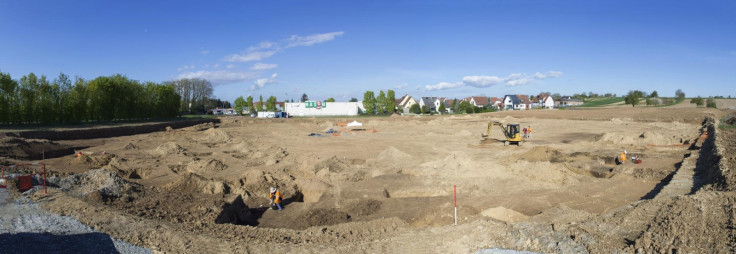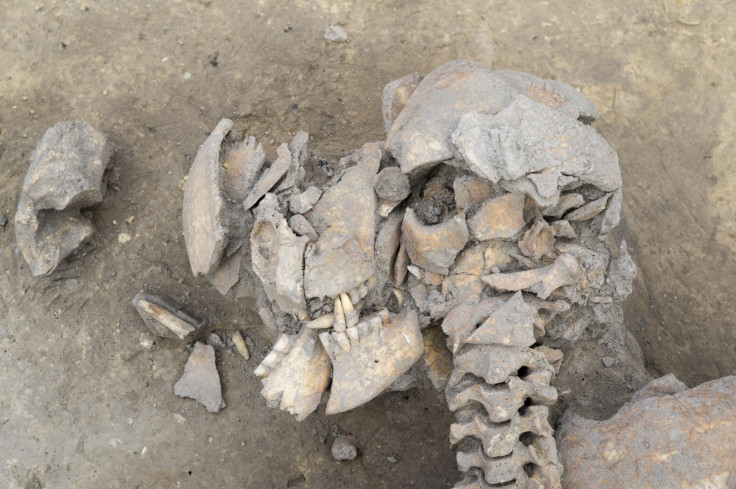Macabre skeleton discovery traces emergence of bloody conflict in Europe to 6,000 years ago
Archaeologists have unearthed the skeletal remains of six individuals in northern France who had been buried without care.
Archaeologists have unearthed the skeletal remains of six individuals in northern France, whose bodies seemingly been thrown into a deep pit. They appear to have been the victims of a conflict, some six thousand years ago.
At the request of the French state, a team from the National Archaeological Research Institute (Inrap) led the excavation of more than 300 silos - pit structures used to store grains, cereals and other agricultural products. All were located in the municipality of Achenheim, in the region Alsace Champagne-Ardenne Lorraine and were bordered by a huge v-shaped ditch.
The entrances of the ditch were all heavily protected by some sort of fortification, suggesting that the people who first built the silos lived in very troubled and violent times, between 4,400 and 4,200 BCE.

Traces of violence
The discovery of the skeletons confirmed this fact in the most vivid manner the archaeologists could have imagined. In silo number 124, a large deep pit about 2.5 metres wide, they found the remains of six male individuals laid down on their back, front or sides, on the rough earth floor.
In this 'mass grave', the skeletons appeared intertwined, lying on top of each other with their legs and arms all tangled up. According to the researchers, this indicates that their corpses were probably thrown carelessly in a heap inside the silos and that they were abandoned there without any ceremony being performed. They appear to have sustained multiple fractures and to have died at the same time, in the same conflict.
The archaeologists also came across another macabre detail: the bones of three severed limbs and a complete forearm were recovered next to the skeletons. It is not known where the bodies to which they belonged to are located.

The emergence of war
The discovery is more evidence that the Neolithic era saw the emergence and multiplication of bloody war-like conflicts. First known records of mass conflicts and massacres date back to between 10,000 and 12,000 years ago in Sudan and Kenya.
But in recent years, archaeologists have uncovered a larger number of sites where massacres occurred in Europe, between 5,000 and 6,000 years ago. The mass grave in Talheim, Germany, is perhaps the most famous example, with a whole community wiped out in a violent struggle around that period. In France, another pit containing eight skeletons and several severed limbs was found in 2012, near the city of Strasbourg.
The violence and brutal nature of the conflicts that are hinted by these discoveries suggest the period is closely associated to the emergence of organised and bloody large-scale warfare.

© Copyright IBTimes 2025. All rights reserved.






















